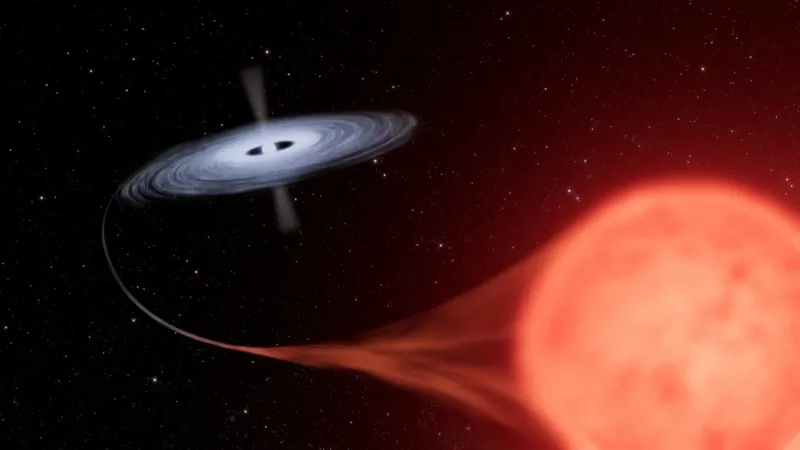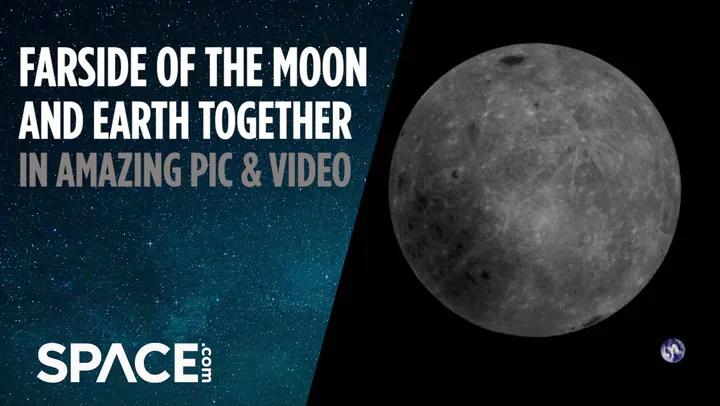
Unveiling the Universe: The Stunning 'Einstein Zig-Zag' Reveals Cosmic Secrets
2025-06-06
Author: Noah
Prepare to be amazed! The cosmos has unveiled yet another extraordinary phenomenon—the jaw-droppingly unique 'Einstein zig-zag.' This fascinating formation showcases a spectacular arrangement of galaxies and a distant quasar that together create a gravitational lens producing six distinct images, an astronomical feat rarely observed by astronomers.
But this visual marvel is more than just a cosmic showpiece; it serves as a crucial tool for scientists aiming to solve the mysteries of our universe. The Einstein zig-zag could potentially answer monumental questions regarding the expansion rate of the universe and the true nature of dark energy.
A Light Show Across 11 Billion Light-Years
At the core of this incredible system, designated J1721+8842, is a single quasar whose light has traveled an astonishing 11 billion light-years. This ancient light gets divided into six separate images as it passes through a precisely aligned pair of galaxies.
Quasars shine brightly due to the massive black holes at their centers, which devour surrounding matter, making them ideal candidates for gravitational lensing. However, this six-image formation is exceptionally rare; typically, gravitational lenses produce only two or four images. "This system offers fantastic potential for measuring cosmological parameters," expressed Martin Millon, a Stanford University cosmologist involved in this groundbreaking research.
The Art of Gravitational Lensing
Gravitational lensing, a concept rooted in Einstein's theory of general relativity, occurs when light curves around massive celestial bodies. When conditions align perfectly, this can result in multiple images of an object. Unlike common configurations like Einstein rings that create two or four images, the Einstein zig-zag showcases an extraordinary dual-galaxy alignment, resulting in six different visual representations.
"Such a perfect alignment is extraordinarily rare," noted Frédéric Dux, the lead author of the study. "We estimate that only one in 50,000 lensed quasars exhibits this configuration, and we've identified roughly 300 lensed quasars globally." The two lensing galaxies themselves are tremendously distant; one has its light traveling for 2.3 billion years, while the other has taken 10 billion years to reach us.
Resolving the Hubble Tension
Gravitational lensing is invaluable for measuring key cosmological parameters, particularly the Hubble constant, which describes the universe's expansion rate. Astronomers often deploy time-delay cosmography to understand the time differences in light paths, which in turn provides crucial distance data.
While collaborations such as COSMOGRAIL and H0LiCOW have achieved impressive precision, the Einstein zig-zag holds even greater promise. This unique dual-lens configuration minimizes uncertainties, allowing for more accurate deducing of the Hubble constant amid ongoing discrepancies known as the 'Hubble tension'—the mismatch between measurements from the early universe and those from modern observations.
Peering into the Nature of Dark Energy
In addition to addressing the Hubble tension, the Einstein zig-zag may offer crucial insights into dark energy, the enigmatic force propelling the accelerated expansion of our universe. Dark energy constitutes roughly 70% of everything in the universe, yet its fundamental nature remains shrouded in mystery.
Thanks to its unique configuration, J1721+8842 allows scientists simultaneous measurements of both the Hubble constant and dark energy's equation of state—the parameter that describes dark energy's evolution over time. This exceptional feature opens a door to tackle two major cosmological enigma at once.
Dux emphasized, "We're updating models to ensure our measurements are precise and unbiased." The intermediate galaxy acts no just as a lens but also as a source of light—a distorted arc in images—which enables researchers to study its mass, star-formation history, and matter distribution.
The Bright Future of Einstein Zig-Zags
While the James Webb Space Telescope has made remarkable contributions, large-scale surveys are essential to uncovering more mysterious systems like J1721+8842. Future initiatives, such as the Vera Rubin Observatory’s Legacy Survey of Space and Time and the Euclid mission, aim to scan broader areas of the sky for these rare celestial configurations.
Though finding another Einstein zig-zag may take luck, every new discovery has the potential to revolutionize our understanding of the universe. This extraordinary phenomenon is not just an optical wonder; it’s a vital key to unraveling the universe's most elusive forces and properties.
As scientists continue their cosmic journey, the Einstein zig-zag serves as a stunning reminder of the alignment of celestial wonders and human curiosity. Each breakthrough invites us to delve deeper into the enigmatic design of space and time.









 Brasil (PT)
Brasil (PT)
 Canada (EN)
Canada (EN)
 Chile (ES)
Chile (ES)
 Česko (CS)
Česko (CS)
 대한민국 (KO)
대한민국 (KO)
 España (ES)
España (ES)
 France (FR)
France (FR)
 Hong Kong (EN)
Hong Kong (EN)
 Italia (IT)
Italia (IT)
 日本 (JA)
日本 (JA)
 Magyarország (HU)
Magyarország (HU)
 Norge (NO)
Norge (NO)
 Polska (PL)
Polska (PL)
 Schweiz (DE)
Schweiz (DE)
 Singapore (EN)
Singapore (EN)
 Sverige (SV)
Sverige (SV)
 Suomi (FI)
Suomi (FI)
 Türkiye (TR)
Türkiye (TR)
 الإمارات العربية المتحدة (AR)
الإمارات العربية المتحدة (AR)